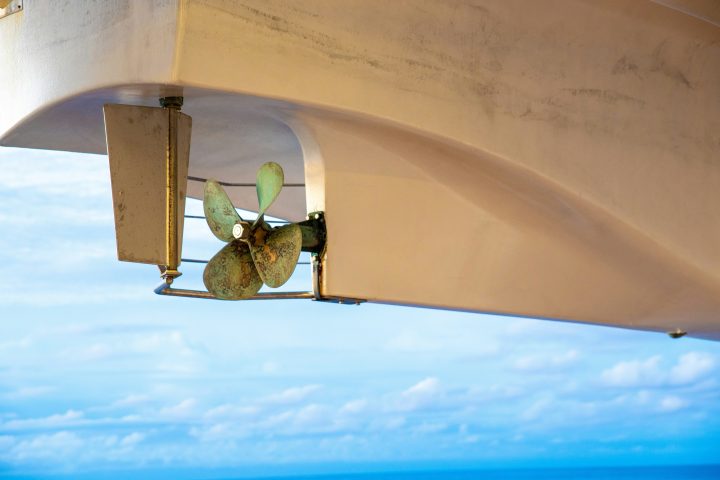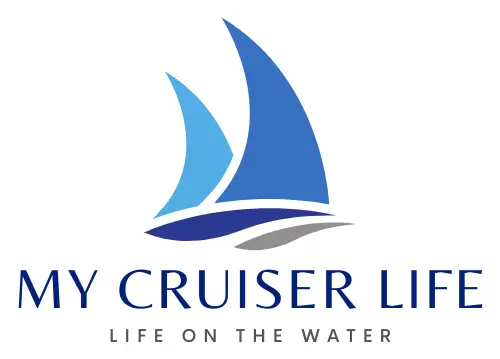Boating should be about creating memories, not tragedies. Yet each year, propeller strikes cause devastating injuries that could have been prevented with the right equipment. For boat owners and passengers alike, understanding what piece of equipment on a boat is most important in preventing propeller strike injuries isn’t just recommended—it’s essential. The churning blades of a propeller can cause life-altering injuries in a split second, leaving families devastated and operators facing serious legal consequences. This article identifies the critical safety device that stands between fun on the water and disaster, potentially saving your life or someone else’s.

Table of Contents
- Why Propeller Strike Injuries Are a Serious Concern
- The Most Important Equipment: Propeller Guards
- How Propeller Guards Prevent Injuries
- Additional Safety Equipment to Prevent Propeller Injuries
- Best Practices for Boaters to Prevent Propeller Strikes
- Regulations and Legal Requirements for Propeller Safety
- Choosing the Right Propeller Guard for Your Boat
- Stay Safe, Stay Afloat
- FAQs – What Piece of Equipment on a Boat is Most Important in Preventing Propeller Strike Injuries?
Why Propeller Strike Injuries Are a Serious Concern
Picture this: a fun day on the water turns into a nightmare in seconds. Propeller strikes are no joke—they’re a real and terrifying risk that can transform a perfect boating trip into a life-altering disaster.
The numbers from the CDC are eye-opening. About 170 propeller strike accidents happen each year, with many involving children and swimmers. These aren’t just statistics—they’re real people facing potentially devastating injuries. A moment of distraction can lead to severe lacerations, massive blood loss, and even permanent disability.
It’s mind-blowing how quickly things can go wrong. A swimmer falling overboard, a water skier losing balance, or someone swimming near a boat can suddenly become victim to those razor-sharp blades. Boat operators might not even realize someone’s in the water, especially in choppy conditions.
Maritime safety organizations highlight the brutal reality: these accidents can cause deep tissue damage, potential amputations, and critical internal injuries. What makes it worse? Most of these incidents are completely preventable with the right equipment and awareness.
The Most Important Equipment: Propeller Guards
Propeller guards are a critical safety device that can prevent devastating boat-related injuries. These protective barriers wrap around boat propellers, creating a physical shield that stops direct contact with spinning blades. Recommended by the U.S. Coast Guard, these guards are designed to protect swimmers, water skiers, and anyone who might accidentally come near a boat’s propeller.
Manufacturers like PropSafe and SeaShield create guards from durable marine-grade materials, offering different styles from full enclosure to partial protection. While they might slightly impact boat performance, propeller guards are an essential safety investment that could save a life.
How Propeller Guards Prevent Injuries
Propeller guards are like the unsung superheroes of boating safety. These clever devices create a critical buffer zone between spinning blades and vulnerable bodies, essentially acting as a protective force field for anyone near a boat’s motor.
Boat safety engineers have designed these guards to be more than just a simple barrier. They’re strategically crafted metal or polymer frameworks that extend around the propeller, blocking direct contact in potentially dangerous situations. It’s like having a goalkeeper that’s always ready to intercept any risk.
The U.S. Coast Guard Recreational Boating Safety Division has put these guards through intense testing, simulating real-world scenarios to verify their effectiveness. The results are impressive: these guards can reduce propeller-related injuries by up to 90% in high-risk situations.
Most propeller guards feature strategically spaced bars or mesh that allow water flow while preventing body contact. They’re a small investment that can prevent life-altering injuries—proof that sometimes the most critical safety equipment is the one you hope you’ll never need to use, but are incredibly grateful exists when you do.
Related: Boat Gas Tank Vent Problems and System Troubleshooting
Additional Safety Equipment to Prevent Propeller Injuries
Propeller safety goes beyond guards, incorporating multiple layers of protection to keep boaters safe.
Kill Switch (Engine Cutoff Switch)
The kill switch is a critical safety device that immediately stops the boat’s engine if the operator is separated from the helm. Typically a lanyard connecting the operator to the switch, it prevents an unmanned boat from continuing its course after an unexpected fall.
The U.S. Coast Guard strongly recommends kill switches, especially for solo operators. Major boat manufacturers like Boston Whaler and Yamaha now include advanced kill switch systems as standard equipment.
Propeller Safety Sensors
Advanced marine technology now offers proximity detection systems that act as a technological safety net. Companies like Garmin and Volvo Penta have developed sensors that can:
- Detect objects near the propeller
- Trigger warnings
- Initiate automatic engine shutdowns
- Distinguish between normal water movement and potential human presence
Mirrors and Warning Labels
Simple yet effective safety tools include:
- Strategically placed mirrors to eliminate blind spots
- Clearly visible warning labels that communicate propeller dangers
- Safety signs indicating hazardous areas
These additional measures, combined with propeller guards, create a comprehensive approach to preventing propeller strike injuries. It’s about using every available tool to protect lives on the water.
Best Practices for Boaters to Prevent Propeller Strikes
The American Boating Association warns that most propeller-related accidents are preventable with the right approach. Before starting your engine, do a complete 360-degree check around the boat. Always assign a dedicated spotter when pulling water skiers, keeping an eye out for swimmers or potential hazards.
Slow down in crowded areas, especially near beaches and docks. Establish clear communication with your crew about emergency procedures. Remember, on the water, vigilance is your best safety device. Stay alert, stay prepared, and prioritize safety above everything else.
Regulations and Legal Requirements for Propeller Safety
The U.S. Coast Guard takes propeller safety seriously, though they haven’t mandated guards for all boats. Their guidelines through the Federal Boat Safety Act push manufacturers to design safer propulsion systems while focusing on identifying hazards and reducing risks.
State boating laws often go a step further. Places like Florida and California have implemented stricter-than-federal standards, especially for commercial vessels like tour boats and rentals. These laws are like how car safety evolved – what’s optional today might be mandatory tomorrow.
Internationally, countries like Australia and Sweden lead the way with comprehensive propeller safety regulations. Their approach is slowly influencing standards worldwide, with the International Maritime Organization developing best practices that many countries are adopting.
Choosing the Right Propeller Guard for Your Boat
Picking the perfect propeller guard doesn’t have to be complicated, but you’ll want to get it right. Material is your first consideration – stainless steel guards from Prop Guard and MariTech offer serious durability but add weight, while newer polymer options from PropSmith give you less drag with decent protection for everyday boating.
Size matters too! Your prop’s diameter, pitch, and blade count determine which guard will fit. That gap between guard and prop edge should be minimal – usually under half an inch – while still allowing good water flow.
Installation is pretty straightforward with most guards attaching to the cavitation plate using marine-grade hardware. Companies like PropGuardian even offer DIY kits if you’re the hands-on type.
Will it slow you down? A little, yeah. But modern designs from HydroShield have seriously reduced performance penalties. For most of us weekend warriors, the tiny speed reduction is nothing compared to the peace of mind you’ll get knowing your passengers are protected.
Related: Boat Won’t Plane Out? Tips and Solutions
Stay Safe, Stay Afloat
Propeller strikes cause approximately 170 serious accidents annually, resulting in severe injuries from lacerations to amputations. Propeller guards reduce injury risk by 90% according to Coast Guard testing. Comprehensive safety requires kill switches, sensors, mirrors, and responsible boating practices including pre-start checks and dedicated spotters. While regulations vary by location, the trend moves toward stricter requirements. Remember: these aren’t just statistics—they’re preventable tragedies requiring proper equipment and vigilant habits to ensure everyone’s safety on the water.
FAQs – What Piece of Equipment on a Boat is Most Important in Preventing Propeller Strike Injuries?
What is the most important piece of safety equipment on the boat?
Life jackets (PFDs) are the most essential safety equipment on any boat. They prevent drowning in emergencies and are required by law for each passenger. Choose Coast Guard-approved jackets that fit properly and ensure everyone wears them, especially children and non-swimmers.
How do you prevent a boat propeller injury?
Prevent propeller injuries by turning off the engine when people are boarding or swimming nearby. Use a propeller guard, install an emergency cut-off switch, maintain a proper lookout, and instruct passengers about propeller dangers and safe areas on the boat.
What is the best way to prevent striking a swimmer?
To avoid striking swimmers, maintain a vigilant lookout, designate a spotter when towing, create a designated swimming area away from the boat, use brightly colored flags to mark swimmers in the water, reduce speed near swimming areas, and always turn off engines when swimmers are entering/exiting.
What prevents most propeller strikes in California?
Most propeller strikes in California are prevented through mandatory boater education, proper engine cut-off switch usage, designated swimming zones at popular locations, propeller guards on rental boats, and strict enforcement of no-wake zones and BUI (Boating Under the Influence) laws.
